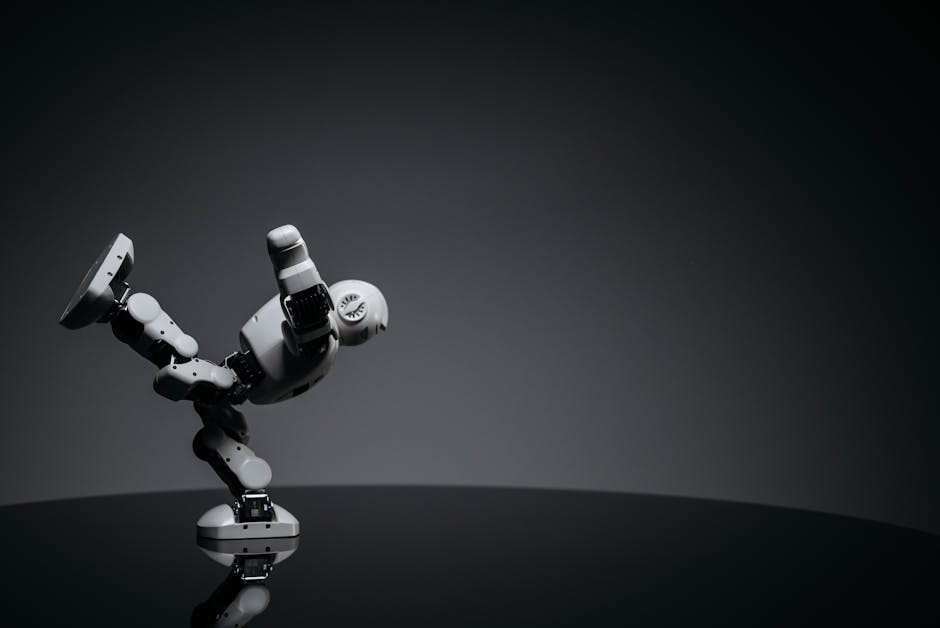Product development & UX are at the heart of next-level innovation in 2025. As digital experiences evolve, understanding the intersection of product strategy, user needs, and cutting-edge design is essential for any organization aiming to lead the market. At InnExo, we believe that mastering these disciplines unlocks the potential for breakthrough products and memorable user experiences that define the future.
The Evolution of Product Development & UX: From Functionality to Experience

Photo by FurtherMore Studio on Pexels
The landscape of product development & UX has shifted dramatically in recent years. No longer is it enough to deliver functional solutions; users now expect seamless, delightful, and deeply personalized experiences. This evolution is driven by rapid technological advancements, changing user expectations, and a growing emphasis on ethical and sustainable design.
In the past, product development focused primarily on features and technical capabilities. Today, the process is holistic—integrating research, design, development, and user feedback in iterative cycles. UX (User Experience) has emerged as a strategic differentiator, with organizations investing in understanding user journeys, pain points, and motivations. The result is a shift from products that merely work to products that resonate emotionally and create lasting value.
Central to this evolution is the integration of cross-functional teams. Designers, developers, product managers, marketers, and stakeholders now collaborate from the earliest stages, ensuring that user needs and business goals align. This collaborative approach accelerates innovation and reduces the risk of misaligned products reaching the market.
As we move deeper into 2025, the most successful organizations are those that embrace this user-centric mindset. They prioritize empathy, inclusivity, and adaptability, recognizing that the best products are those that continuously evolve alongside their users.
Key Trends Shaping Product Development & UX in 2025

Photo by Shiny Diamond on Pexels
Staying ahead in product development & UX requires awareness of the latest trends that are redefining the industry. In 2025, several key movements are influencing how products are conceived, designed, and delivered.
Artificial Intelligence (AI) and Personalization: AI continues to revolutionize product development, enabling adaptive interfaces, predictive analytics, and highly personalized user experiences. AI-powered design tools streamline workflows, generate creative assets, and help teams iterate rapidly. However, ethical considerations—such as transparency, privacy, and algorithmic bias—are more important than ever, requiring responsible implementation.
Sustainable and Ethical Design: Users are increasingly eco-conscious, demanding products that minimize environmental impact. Digital sustainability includes optimizing code, reducing energy consumption, and making ethical choices throughout the product lifecycle. Designers are also prioritizing accessibility and inclusivity, ensuring digital products serve diverse audiences.
Immersive Experiences (3D, AR, VR): The rise of immersive technologies is transforming how users interact with digital products. Interactive 3D elements, augmented reality (AR), and virtual reality (VR) create engaging, memorable experiences that blur the line between digital and physical worlds. These technologies require new design paradigms and a deep understanding of spatial UX.
Minimalism and Clarity: Amidst technological complexity, minimalist design is gaining traction. Clean interfaces, purposeful use of color, and intuitive navigation help users focus on what matters. Micro-interactions and subtle animations enhance usability without overwhelming the experience.
Business-Centric UX: The role of UX professionals is expanding to include strategic business thinking. Designers are expected to demonstrate how UX decisions impact key metrics—such as retention, conversion, and customer satisfaction—making UX a core driver of business success.
Designing for the Future: Integrating AI and Emerging Technologies

Photo by Pavel Danilyuk on Pexels
Integrating AI and emerging technologies into product development & UX is no longer a futuristic vision—it is a present-day necessity. AI-powered tools are transforming every stage of the product lifecycle, from ideation and prototyping to testing and deployment.
AI can analyze vast amounts of user data to uncover patterns, predict behaviors, and suggest design improvements. Generative design tools assist in creating layouts, color schemes, and even entire branding systems, freeing designers to focus on high-level strategy and creativity. AI-driven personalization tailors content, recommendations, and interfaces to individual users, increasing engagement and satisfaction.
However, successful integration of AI requires a thoughtful approach. Transparency is key—users must understand how AI-driven features operate and how their data is used. Teams must address ethical concerns, such as bias in algorithms and the potential for unintended consequences. Collaboration between designers, data scientists, and ethicists ensures responsible innovation that builds trust with users.
Beyond AI, immersive technologies like AR and VR are opening new frontiers in product development & UX. These technologies enable spatial design, interactive 3D elements, and entirely new modes of interaction. Designing for these platforms demands a shift from traditional 2D thinking to a focus on depth, movement, and real-world context.
Ultimately, the future belongs to organizations that embrace technology as a partner in creativity—leveraging AI and emerging tools to deliver experiences that are not only innovative but also meaningful and ethical.
Building User-Centric Products: Research, Testing, and Continuous Improvement

Photo by Google DeepMind on Pexels
User-centricity is the foundation of successful product development & UX. Building products that genuinely solve user problems requires a deep commitment to research, testing, and continuous improvement.
User Research: Effective product teams invest heavily in understanding their users. This involves qualitative methods—such as interviews, surveys, and ethnographic studies—as well as quantitative analytics. The goal is to uncover real needs, motivations, and pain points that inform every design decision.
Prototyping and Testing: Rapid prototyping allows teams to visualize ideas and gather feedback early. Usability testing—both moderated and unmoderated—identifies friction points and validates assumptions. Iterative cycles of design, test, and refine ensure that products evolve in response to real-world feedback.
Continuous Improvement: Launching a product is just the beginning. Ongoing monitoring, user feedback, and data analysis drive continuous improvement. Successful organizations establish feedback loops, measure key metrics, and remain agile—ready to adapt as user needs and market conditions change.
This commitment to user-centricity fosters trust, loyalty, and long-term engagement. It also minimizes the risk of costly missteps, ensuring that products remain relevant and valuable over time.
Collaboration and Cross-Functional Teams: The Engine of Innovation

Photo by Andrew Neel on Pexels
Innovation in product development & UX thrives on collaboration. Today’s most effective teams are cross-functional—bringing together designers, developers, product managers, marketers, and stakeholders from the outset.
This collaborative approach breaks down silos and accelerates decision-making. Early involvement of diverse perspectives ensures that user needs, technical feasibility, and business goals are considered together. Design sprints, workshops, and co-creation sessions foster creativity and alignment, reducing the risk of costly rework later in the process.
Modern collaboration is supported by powerful digital tools—such as Figma, Miro, and collaborative prototyping platforms—that enable real-time feedback and seamless communication. Remote and distributed teams can work together effectively, leveraging asynchronous workflows and transparent documentation.
Ultimately, cross-functional collaboration is the engine that drives next-level innovation. It empowers teams to move quickly, experiment boldly, and deliver products that truly stand out in a crowded marketplace.
Measuring Success: Metrics That Matter in Product Development & UX

Photo by Surja Sen Das Raj on Pexels
Measuring the impact of product development & UX is essential for continuous improvement and business success. While traditional metrics—such as downloads, page views, and revenue—remain important, modern teams focus on a broader set of indicators.
User Engagement: Metrics like session duration, frequency of use, and feature adoption provide insights into how users interact with your product. High engagement often correlates with strong product-market fit and user satisfaction.
Usability and Satisfaction: Tools like Net Promoter Score (NPS), Customer Satisfaction (CSAT), and System Usability Scale (SUS) help quantify user perceptions. Regular surveys and feedback loops uncover areas for improvement and track progress over time.
Conversion and Retention: Understanding how users move through key journeys—such as onboarding, purchase, or upgrade—reveals friction points and opportunities for optimization. Retention rates are a powerful indicator of long-term value and product stickiness.
Accessibility and Inclusivity: Modern organizations track accessibility compliance and inclusivity metrics, ensuring that products serve diverse audiences. This not only fulfills ethical obligations but also expands market reach.
By aligning UX metrics with business goals, organizations can demonstrate the tangible value of investing in user experience—and make data-driven decisions that propel continuous growth.
Future-Proofing Your Product Strategy: Adaptability and Lifelong Learning

Photo by Google DeepMind on Pexels
The pace of change in product development & UX is accelerating. Future-proofing your strategy requires adaptability, curiosity, and a commitment to lifelong learning.
Organizations must stay attuned to emerging technologies, shifting user expectations, and evolving market dynamics. This involves regular training, attending industry conferences, and fostering a culture of experimentation. Teams that embrace change are better equipped to seize new opportunities and navigate uncertainty.
Additionally, cultivating a growth mindset is essential. Encourage team members to share knowledge, explore new tools, and challenge assumptions. Celebrate learning from failures as much as successes, recognizing that innovation often emerges from bold experimentation.
Finally, keep the user at the center of every decision. As technology evolves, so do user needs and behaviors. Continuous research, empathy, and feedback ensure that your products remain relevant, valuable, and competitive—no matter what the future holds.
Conclusion: Next-Level Innovation Starts Here

Photo by JESHOOTS.com on Pexels
Product development & UX are the cornerstones of next-level innovation in 2025. By embracing user-centricity, integrating emerging technologies, fostering collaboration, and measuring what matters, organizations can create products that delight users and drive business success.
At InnExo, we are passionate about helping teams master the art and science of product development & UX. As the digital landscape evolves, those who invest in these disciplines will shape the future—delivering meaningful, impactful experiences that stand the test of time.
Sources
- https://trends.uxdesign.cc
- https://careerfoundry.com/en/blog/product-design/product-design-trends/
- https://www.uxdesigninstitute.com/blog/ux-design-trends-in-2025/
- https://www.behance.net/gallery/209674381/Design-Trends-2025?locale=en_US
- https://www.uxstudioteam.com/ux-blog/ui-trends-2019





